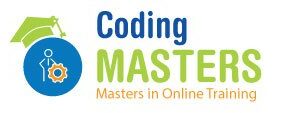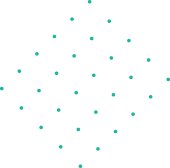Data Science vs Traditional Statistics
Data science and traditional statistics are both vital fields in data analysis, but they differ in several key aspects, ranging from their scope and goals to the tools and techniques used. Here’s a deeper look at how Data Science vs Traditional Statistics compares across various dimensions:
Scope and Goals
- Data Science: The primary focus of data science is to extract valuable insights, patterns, and knowledge from large and complex datasets. It employs a combination of statistical methods, machine learning algorithms, and domain knowledge to generate actionable insights that support decision-making processes. Data science aims to solve real-world problems by leveraging data to make predictions, identify trends, and optimize processes.
- Traditional Statistics: Traditional statistics, on the other hand, is mainly concerned with summarizing and analyzing data to make inferences about larger populations based on sample data. It primarily focuses on hypothesis testing, estimation, and modeling using established statistical techniques such as t-tests, ANOVA, and regression analysis. The goal is typically to draw conclusions from data and understand relationships between variables.
Data Types
- Data Science: One of the major differentiators in Data Science vs Traditional Statistics is the type of data handled. Data science deals with both structured and unstructured data, including diverse sources like text, images, videos, sensor data, and social media data. Data scientists often work with big data, handling vast amounts of information from varied sources such as IoT devices, clickstreams, and other real-time data feeds.
- Traditional Statistics: Traditional statistics typically focuses on structured data, which is more organized and well-defined. It often assumes a clean and consistent data format, making it easier to apply classical statistical methods. Traditional statistics is more aligned with working with tabular data, where each data point is associated with a defined set of variables.
Tools and Techniques
- Data Science: Data scientists have access to a broad array of tools and techniques to manipulate, analyze, and visualize data. They typically use programming languages such as Python and R for data analysis, with libraries and frameworks like pandas (for data manipulation), Matplotlib and seaborn (for data visualization), and machine learning libraries like sci-kit-learn, TensorFlow, and PyTorch. Additionally, big data tools such as Hadoop and Spark are commonly used for processing large-scale data.
- Traditional Statistics: Traditional statistics relies more on specialized statistical software such as SPSS, SAS, and Excel. These tools are designed to apply traditional statistical methods like regression analysis, hypothesis testing, and correlation analysis. The focus in traditional statistics is often on applying established formulas and techniques rather than building complex algorithms.
Focus on Prediction
- Data Science: One of the defining aspects of data science is its emphasis on predictive modeling. Using machine learning algorithms, data scientists are able to predict future trends, detect patterns, and make recommendations. Predictive analytics, such as forecasting sales or customer behavior, is a key area in data science, providing businesses with actionable insights to guide future strategies.
- Traditional Statistics: While traditional statistics does provide insights into relationships between variables, its primary focus is not on prediction. Traditional statistical methods are more concerned with making inferences about populations, testing hypotheses, and estimating the parameters of a model. While statistical models can be used for prediction, this is not their main goal.
Interdisciplinary Nature
- Data Science: Data science is highly interdisciplinary, combining elements from computer science, mathematics, statistics, data engineering, and specific domain expertise. It requires a mix of skills in coding, algorithm development, and understanding the nuances of the data within specific industries to solve complex, real-world problems.
- Traditional Statistics: Although traditional statistics can also be considered interdisciplinary, it is more rooted in statistical theory and methods. Traditional statisticians focus on statistical inference and model-building based on mathematical and statistical foundations, often without delving deeply into computer science or engineering principles.
Summary: Data Science vs Traditional Statistics
In summary, Data Science vs Traditional Statistics highlights the broader scope of data science, which extends beyond traditional statistics by integrating machine learning, big data techniques, and predictive modeling. While traditional statistics is essential for understanding data distributions and making inferences, data science is focused on using computational tools to extract actionable insights from both structured and unstructured data. As data becomes increasingly complex, the role of data science has grown, offering businesses advanced capabilities to forecast trends, optimize strategies, and drive decision-making in ways that traditional statistics alone cannot achieve.
By incorporating advanced data manipulation, machine learning, and predictive modeling, data science has emerged as a critical field for extracting actionable insights and solving complex problems in today’s data-centric world. As such, the field of data science continues to evolve, offering exciting career opportunities for those who can master the skills required to navigate both structured and unstructured data, and leverage the latest tools and technologies to drive meaningful change.
Contact CodingMasters.in for more information.
FAQ’s


